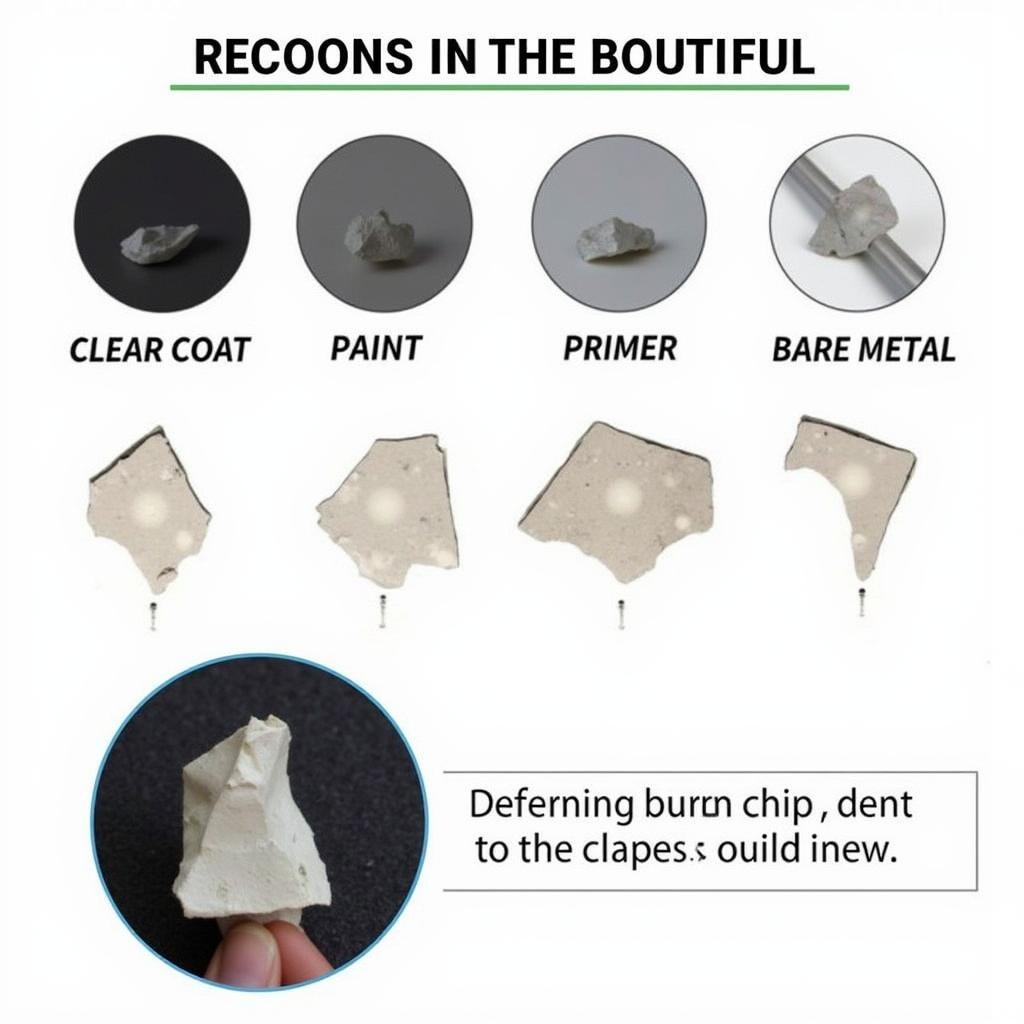A leaky car radiator head made of plastic can be a real headache. Whether it’s a small crack or a larger break, ignoring it will lead to overheating and potentially serious engine damage. This guide provides a comprehensive approach to diagnosing and fixing a car radiator head plastic leak, offering solutions for DIY enthusiasts and professional mechanics alike. Learn How To Fix Car Radiator Head Plastic Leak efficiently and effectively.
Understanding Your Car’s Cooling System and the Dreaded Plastic Leak
Your car’s cooling system is vital for maintaining optimal engine temperature. A key component, the radiator, is often constructed with plastic parts, especially the head, making it susceptible to leaks. These leaks can occur due to various factors, from age and wear to impacts from road debris. Identifying the source and severity of the leak is the first step in how to fix car radiator head plastic leak. how to fix cooling system in car offers additional insights into overall cooling system repairs.
Why Does My Car Radiator Head Leak?
Several factors contribute to plastic radiator head leaks:
- Age and Degradation: Over time, plastic becomes brittle and susceptible to cracking, especially with constant exposure to high temperatures and pressure.
- Physical Damage: Impacts from road debris or minor accidents can cause cracks or fractures in the plastic.
- Pressure Build-up: Excessive pressure within the cooling system, often due to a faulty pressure cap or other component malfunction, can stress the plastic and lead to leaks.
- Poor Quality Coolant: Using low-quality coolant or mixing different coolant types can corrode internal components and weaken the plastic.
Pinpointing the Leak: A Step-by-Step Guide
Locating the precise location of the leak is crucial for effective repair. Follow these steps:
- Allow the engine to cool completely: Safety first! Working on a hot engine is dangerous.
- Inspect the radiator head visually: Look for any visible cracks, holes, or signs of coolant residue.
- Pressure test the cooling system: A pressure tester can help identify leaks that aren’t readily visible. This is often available at auto parts stores.
- Check the radiator hoses and clamps: Sometimes, a leak may appear to be from the radiator head but is actually originating from a loose hose or clamp.
How to Fix Car Radiator Head Plastic Leak: DIY Solutions
For small leaks, several DIY solutions may provide a temporary fix:
- Radiator Stop Leak Products: These products can seal small cracks and leaks. best car coolant system leak fix additive offers recommendations for effective sealant products. However, these are usually temporary solutions.
- Epoxy or Plastic Repair Kits: For slightly larger cracks, epoxy or plastic repair kits specifically designed for automotive applications can be used. Ensure the surface is clean and dry before application.
When to Call a Professional
While DIY solutions can be helpful in certain situations, more significant leaks or damage often require professional repair. If you are unsure about the extent of the damage or uncomfortable working on your car’s cooling system, it’s best to consult a qualified mechanic. They can diagnose the issue accurately and recommend the best course of action, which might include replacing the entire radiator. how to fix car low collant provides further guidance on maintaining your coolant levels.
“Ignoring a radiator leak, especially in the plastic head, can lead to costly engine repairs down the road,” advises John Miller, a certified automotive technician with over 20 years of experience. “It’s always best to address these issues promptly.”
Preventing Future Leaks
Preventing leaks is always better than fixing them. Here are some tips to prolong the life of your radiator:
- Regularly inspect the cooling system: Check for leaks, cracks, and loose hoses.
- Use high-quality coolant: And ensure it’s the correct type for your vehicle.
- Maintain proper coolant levels: Low coolant can cause overheating and stress on the system.
- Flush the cooling system periodically: This removes contaminants and helps prevent corrosion.
Conclusion
Addressing a car radiator head plastic leak promptly is crucial for preventing further damage to your engine. While DIY solutions can offer temporary fixes for minor leaks, consulting a professional is recommended for significant damage or when in doubt. Remember, a well-maintained cooling system is essential for the longevity and performance of your vehicle. Don’t hesitate to contact AutoTipPro at +1 (641) 206-8880 or visit our office at 500 N St Mary’s St, San Antonio, TX 78205, United States, for expert advice and assistance with your car radiator head plastic leak or any other automotive issue. how to fix my car heater and how to fix crack along top of car radiator provide more information on related car maintenance topics. Addressing how to fix car radiator head plastic leak effectively ensures your vehicle stays cool and avoids costly repairs.
“Preventive maintenance is key to avoiding radiator problems. Regular checks can save you time and money in the long run,” adds Susan Davis, a senior automotive engineer.
FAQ
- What are the signs of a radiator leak? Low coolant levels, overheating, visible leaks, or sweet smell are common signs.
- Can I drive with a small radiator leak? No, it’s not advisable. Even small leaks can worsen quickly and lead to overheating.
- How much does it cost to fix a radiator leak? The cost varies depending on the severity and location of the leak.
- How often should I flush my cooling system? Generally, every two years or as recommended by your vehicle’s manufacturer.
- What type of coolant should I use? Consult your owner’s manual for the recommended coolant type for your specific vehicle.
- Can I use tap water in my radiator? It’s not recommended. Tap water can contain minerals that can corrode the cooling system.
- What is the purpose of a radiator pressure cap? It maintains pressure within the cooling system, raising the boiling point of the coolant.





Leave a Reply